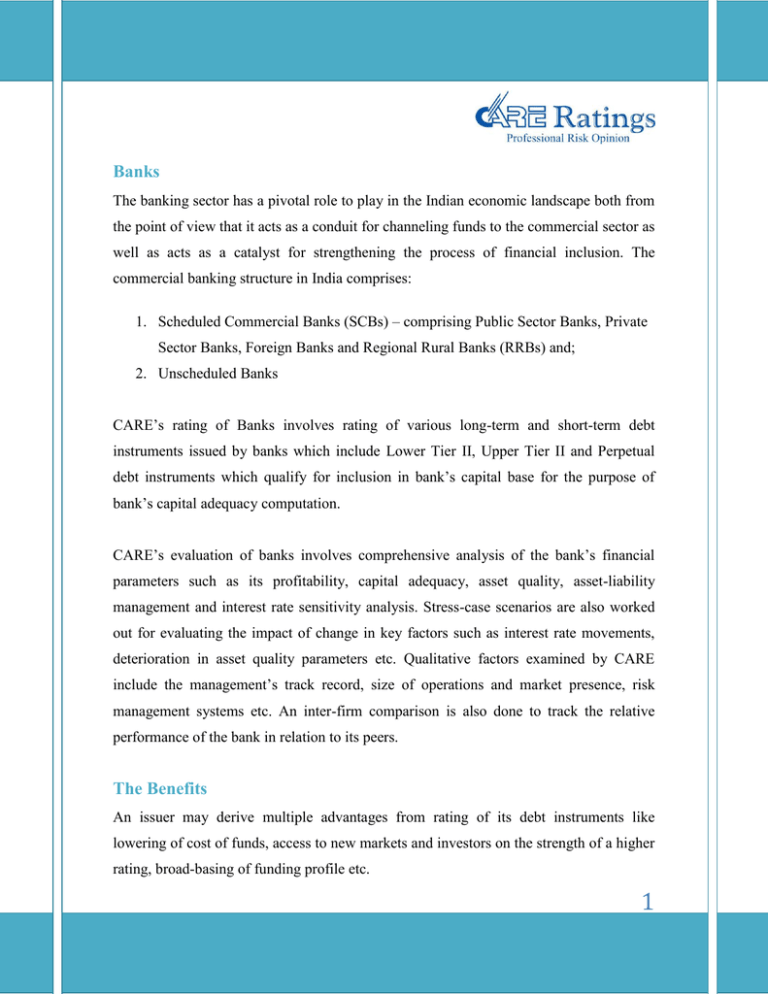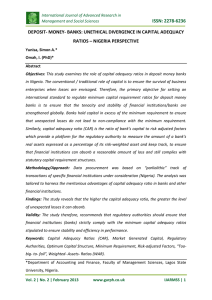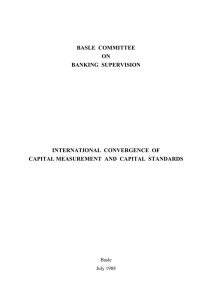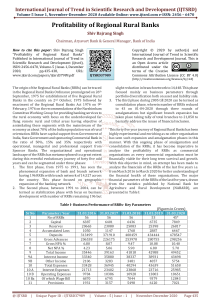Banks
advertisement

Banks The banking sector has a pivotal role to play in the Indian economic landscape both from the point of view that it acts as a conduit for channeling funds to the commercial sector as well as acts as a catalyst for strengthening the process of financial inclusion. The commercial banking structure in India comprises: 1. Scheduled Commercial Banks (SCBs) – comprising Public Sector Banks, Private Sector Banks, Foreign Banks and Regional Rural Banks (RRBs) and; 2. Unscheduled Banks CARE’s rating of Banks involves rating of various long-term and short-term debt instruments issued by banks which include Lower Tier II, Upper Tier II and Perpetual debt instruments which qualify for inclusion in bank’s capital base for the purpose of bank’s capital adequacy computation. CARE’s evaluation of banks involves comprehensive analysis of the bank’s financial parameters such as its profitability, capital adequacy, asset quality, asset-liability management and interest rate sensitivity analysis. Stress-case scenarios are also worked out for evaluating the impact of change in key factors such as interest rate movements, deterioration in asset quality parameters etc. Qualitative factors examined by CARE include the management’s track record, size of operations and market presence, risk management systems etc. An inter-firm comparison is also done to track the relative performance of the bank in relation to its peers. The Benefits An issuer may derive multiple advantages from rating of its debt instruments like lowering of cost of funds, access to new markets and investors on the strength of a higher rating, broad-basing of funding profile etc. 1





